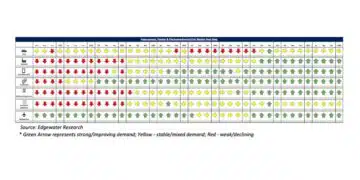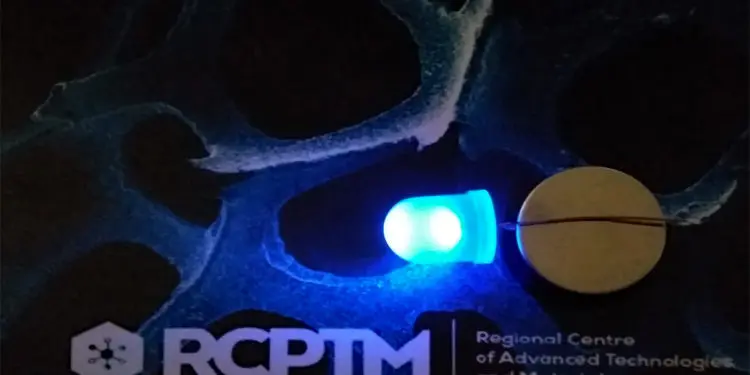The next revolutionary step in supercapacitor technology development is closing its energy density gap to batteries while power density is closer to capacitors.
New supercapacitor active electrode materials based on graphene, that enable quick and safe energy charging at record-high level of energy and power density, have been developed and demonstrated by RCPTM Regional Centre of Advanced Technologies and Materials in Olomouc, Czech Republic.
Newly discovered materials overcome the main trade-off issue of supercapacitor technologies today – to reach either its maximum high energy density or high power density. The new 2D graphene-based material brings both parameters to record high level of electrical density up to 60 Wh/kg at 2 kW/kg with further potential to increase power densities up to 50kW/kg.
Two new materials using readily available fluorographene were explored. 3D covalently functionalized graphene and 2D highly N-doped graphene ready for cost-effective mass manufacturing of electrodes. Supercapacitors made from the new materials are exhibiting excellent stability and low drop of capacitance after thousands of charging cycles unlike some other supercapacitor technologies on the market today.
The new materials significantly expand capabilities of current supercapacitors and present potential to further replace / empower batteries in wide range of electronic devices for automotive EV/HEV vehicles, smartphones, wearables, industrial, medical or space applications.
“We explored two ways of boosting energy storage capabilities of graphene supercapacitor electrodes by (i) covalently functionalized 3D graphene and (ii) 2D extremely N-doped graphene structures using fluorographene chemistry. The 3D graphene material featured record level of energy density up to 1000F/g, nevertheless its power density limitation and high material cost made us to think about a completely different approach. The 2D highly N-doped graphene material showed extremely high power density result in combination with record energy density.”
explains prof. Michal Otyepka; RCPTM team leader
Doping graphene with heteroatoms can significantly alter its electronic structure, giving rise to novel 2D materials with tunable electronic, magnetic, and chemical properties that can be exploited in diverse applications not limited to supercapacitors. In particular, nitrogen doping can imprint active centers on graphene suitable (electro)catalytic, electrochemical (energy storage and sensors), and spintronic applications.
„The key novelty of our research on 2D material is previously unexplored process route using fluorographene to synthesize exceptionally highly N-doped graphene. Our innovative process enable to prepare very conductive 2D material with high density structure that increase concentration of charge nano-traps and conductive nano-channels, thus it brings high energy storage and power density capabilities together“
add Otyepka
A team of chemists and physicists at RCPTM demonstrated 2D N-doped graphene electrodes supercapacitors featuring record 150Wh/l at 5kW/kg with potential to further increase power density up to 50kW/kg. This highest ever reported energy density on graphene supercapacitors close the gap of energy densities with most of the conventional battery technologies while providing much faster unlimited cycles of fast charging and discharging at tenfold higher power density.
For comparison – lead-acid batteries used in electric vehicles typically show energy density below 100 Wh/l, while the maximum energy density lithium ion battery – reach 100-265 Wh/kg or 250-670Wh/l with power density below 1kWh/kg.
Current fast-charging commercial supercapacitors have a relatively poor energy density typically below 10Wh/l. The latest research (published in 2020) demonstrated supercapacitors with energy densities up to 90Wh/l, significantly lower compare to the presented results herein.
Covalently functionalized graphene research as a suitable supercapacitor electrode material was published by the RCPTM team already in 2018 by Advanced Functional Materials „High-Performance Supercapacitors Based on a Zwitterionic Network of Covalently Functionalized Graphene with Iron Tetraaminophthalocyanine“ https://doi.org/10.1002/adfm.201801111 and „Covalently functionalized graphene as a supercapacitor electrode material“ in FlatChem Journal, in 2019 https://doi.org/10.1016/j.flatc.2018.12.004. The work was followed further in 2020 by ACS Sustainable Chem. Eng. publication „Tunable Synthesis of Nitrogen Doped Graphene from Fluorographene under Mild Conditions“ https://doi.org/10.1021/acssuschemeng.9b07161
Fluorographene based processes to prepare high energy graphene electrode material has been applied for patent
Acknowledgement
The project was supported by European Research Committee grants ERC projects No. 683024 and PoC 899245































